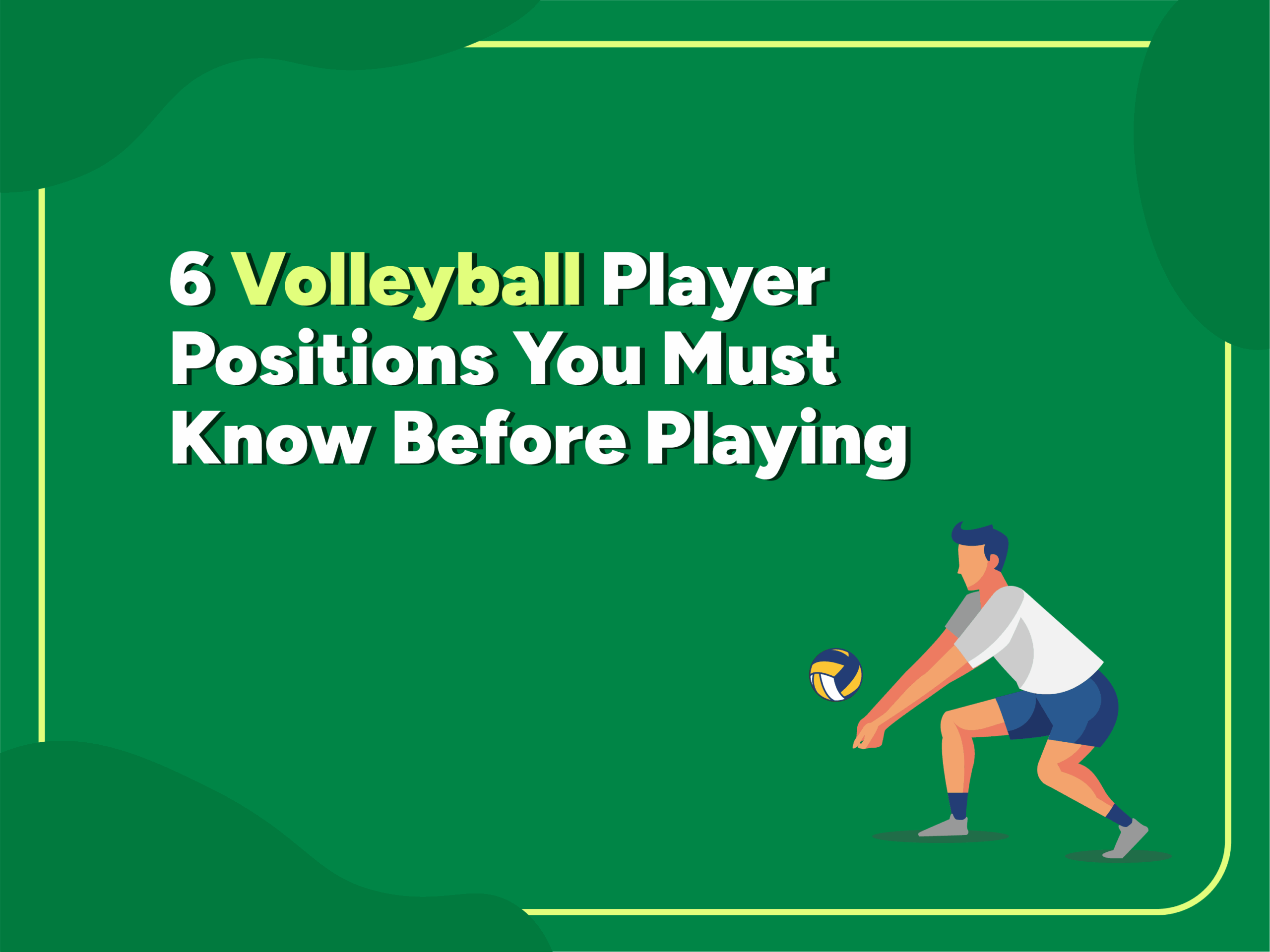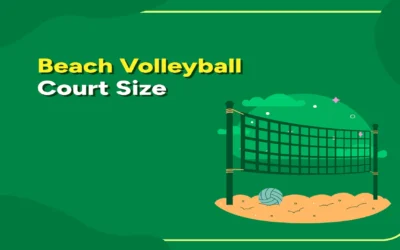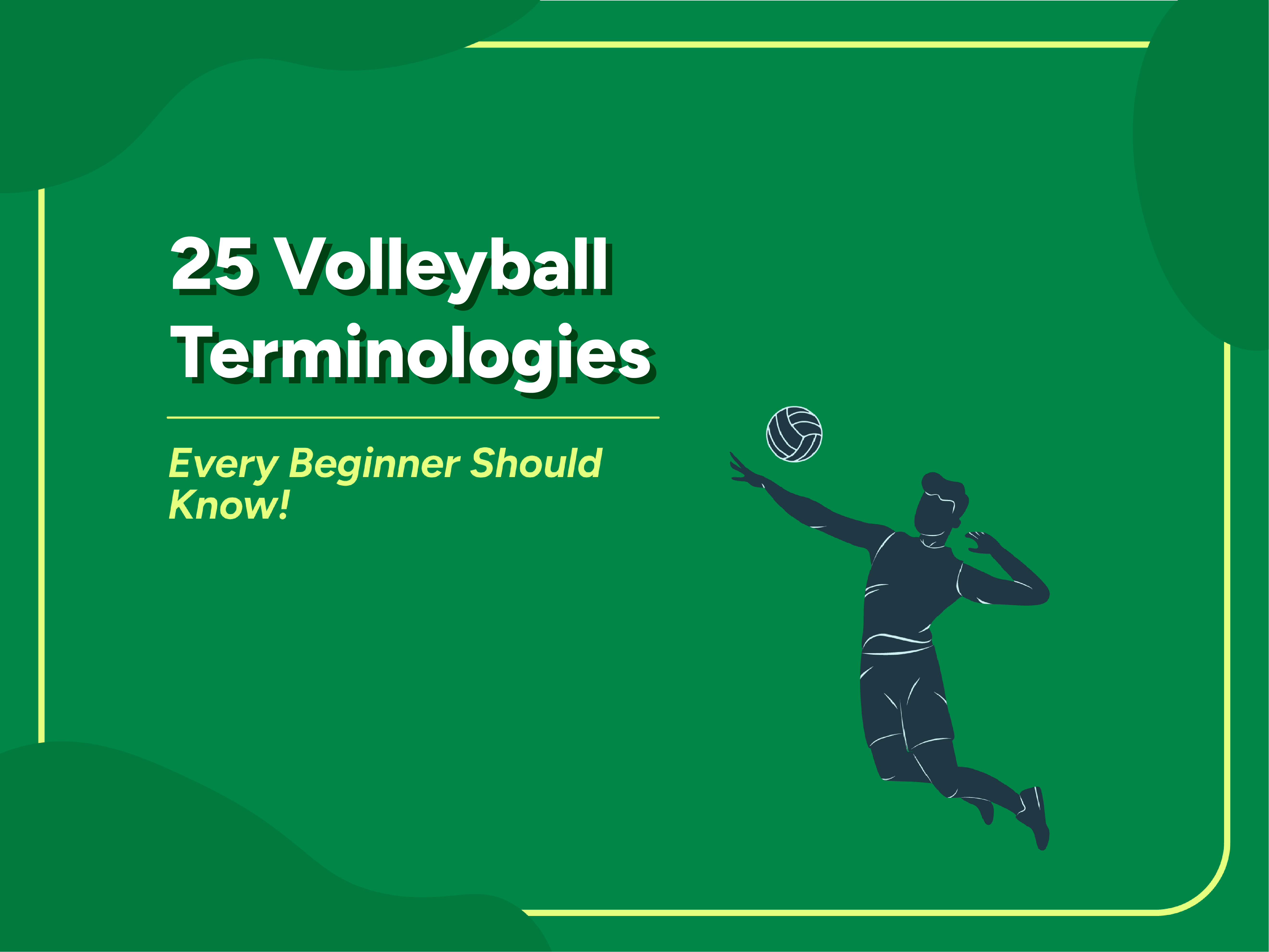You’ve probably watched a volleyball match and wondered, Why are players always rotating? Who’s that player in the odd-colored jersey? And what exactly is a “setter”?
Volleyball is not necessarily about jumping around and slamming the ball. It’s a quick sport with well-defined jobs, intelligent positioning, and procedural rotations. Understanding the volleyball player positions gives you an idea of how the game goes, who does what, and why certain players never attack at the net.
If you’re also one who wants to understand the positions of all six players in volleyball, you’re at the right place. Read on to know about all the volleyball position names and roles.
So let’s break it all down in a simple manner.
Court Positions vs. Player Roles: What’s the Difference?
Volleyball Player Positions on the Court

Let’s start with a basic but important distinction:
There are always six players from each team on the court. Each one stands in a specific volleyball court position, numbered 1 through 6 in a clockwise direction.
Here’s how it goes:
- Position 1 – Right Back (usually the server)
- Position 2 – Right Front
- Position 3 – Middle Front
- Position 4 – Left Front
- Position 5 – Left Back
- Position 6 – Middle Back
These are the volleyball player positions numbers that are applied at all levels. Players rotate through these positions in a clockwise manner each time their side scores a point on the other team’s serve.
However, that doesn’t imply that each player does exactly the same thing in each position. That is where volleyball player positions and roles take charge.
Don’t Miss: Your Complete Guide to Volleyball Court Dimensions.
Primary Volleyball Player Roles
While participants cycle through six volleyball court positions and rotations, they adhere to specific positions that align with their abilities. Let’s go over the key ones:
1. Setter – The Playmaker
If volleyball were a film, the setter would be the director.
Their task? Position the ball for the attackers in the optimal manner. They handle the ball more than anyone else and are essentially the smartest part of the offence.
- Court zones: Typically attempts to remain near Position 2 or Position 3
- Skills required: Fast decision-making, accurate ball control, leadership
- Fun fact: Setters frequently utilise subtle hand signals behind their backs to signal plays
The volleyball setter position is one of the most technically challenging positions on the team. Proficiency with the setting position in volleyball involves vision and fast hands.
2. Outside Hitter (Left-side Hitter) – The Go-To Attacker
This is usually the most versatile attacker on the team.
They hit from Position 4 (left front) and are expected to attack, block, dig, and even pass. When in the back row, they’re still involved in defence and receive serves.
- Why it matters: Often gets the ball when the team is in trouble
- Skills needed: Powerful spikes, consistent passing, stamina
- Also known as: The all-rounder
One of the most important positions in a volleyball team, the outside hitter carries a big offensive load.
3. Opposite Hitter (Right-Side Hitter) – The Left-Handed Threat
Positioned opposite the setter (hence the name), this player hits from the right front (Position 2) and blocks the other team’s best outside hitter.
- Strengths: Big blocks, strong spikes from awkward angles
- Often left-handed? Yes—makes it easier to hit from the right side
- Other duties: Acts as a backup setter if the main one digs the first ball
They’re vital in balancing the attack and are a key piece among players in volleyball positions.
4. Middle Blocker (Middle Hitter) – The Wall
They stay near Position 3 (middle front) and are mainly responsible for blocking attacks, especially quick ones from the centre.
They’re often the tallest on the team and need lightning-fast reactions to stop spikes.
- Role: Block, quick attack, block again
- Skills: Timing, height, and hustle
- Offense too? Yes! Quick sets from the setter = deadly
The middle blocker is central to volleyball defence positions and rapid-fire offence.
5. Libero – The Defensive Magician
Easily spotted by their different-colored jersey, the libero is a defence-only specialist. They play only in the back row, can’t serve (in some leagues), can’t spike, and can’t rotate to the front.
- Court zone: Mostly in Positions 5 or 6
- Strengths: Serve receive, digs, saving impossible balls
- Why the colour jersey? So referees and fans know they have special rules
The libero volleyball position is all about control and consistency—no powerful spikes, just clean digs and smooth passes.
6. Defensive Specialist – The Unsung Hero
Think of this as a libero’s backup. They sub in for front-row players who aren’t strong at defence but don’t have the same freedom as a libero.
- Limited role: Comes in for one or two rotations
- Helps when: A team needs extra defence in specific moments
- Seen more in: Advanced or pro-level games
A smart coach uses different positions in volleyball like puzzle pieces—each has a fit depending on the match situation.
Understanding Rotations and Court Movement
This is where things often get confusing.
Players rotate clockwise after winning back the serve. That means everyone eventually plays every volleyball player’s position in court, even if their main role stays the same.
For example:
- Your setter may start in the back row (Position 1), rotate through Position 6 and 5, then end up in Position 2 (front row).
- By then, the coach can switch someone in to get the setter near the net.
This rotation rule is why you typically see players shifting immediately following the serve—they’re moving into their best playing area while still respecting the order of the volleyball court positions and rotations.
Also Read: Volleyball Net Height – All You Need to Know
Volleyball Hand Positions & Setting Cues
Ever seen players tossing a rapid hand signal over their back when serving or receiving?
Those are strategic cues, employed to signal plays, formations, or blocking schemes, similar to secret codes among teammates.
And on setting, players usually have specific volleyball hand positions to make clean, legal sets. Hands too close = double contact. Too slow = easy block.
Wrap-Up: Knowing Your Role = Playing Smarter
Volleyball is one of those sports where all the players count—each spot has a function. From the thundering spikes of an outside hitter to the blinding digs of a libero, each spot helps the team run like a well-oiled machine.
So the next time you play (or watch) on the court, see if you can spot who’s who. Trust us—it makes the game a whole lot more exciting to watch.
Whether you’re learning, playing on a team, or teaching beginners, knowing the volleyball positions and mastering all volleyball positions is the best place to start.
Frequently Asked Questions
The six primary positions include Setter, Outside Hitter, Opposite Hitter, Middle Blocker, Libero, and Defensive Specialist. Each of them has unique responsibilities in attack, defence, and court coverage, so team coordination becomes important.
2. What is a libero?
A Libero is a back-row defensive specialist wearing an alternate-colored jersey. They are unable to serve (in certain leagues), spike, or move to the front row. Their primary responsibility is to dig, serve, receive, and save hard balls.
3. What are the 4 fouls in volleyball?
Normal fouls include:
– Double touch (the same player touches the ball twice)
– Lift or carry
– Foot fault on serve
– Net touch by a player on serve
All lead to a point for the opposing team.





0 Comments